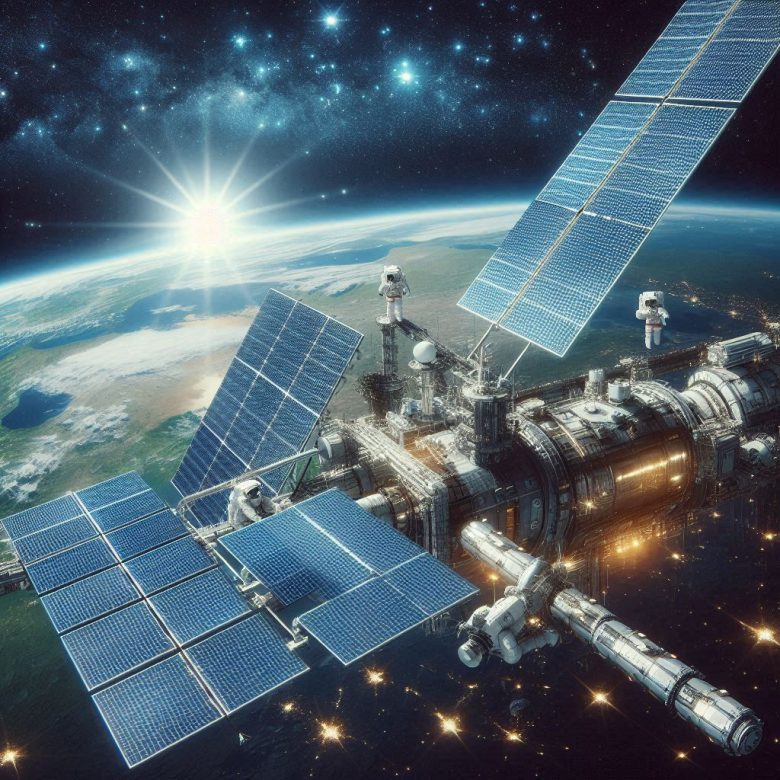Is Oil Still King? A Deep Dive Into the Global Energy War and the Rise of Solar Power

Disclaimer: This blog article is for informational purposes only and should not be considered financial advice. Everyone’s financial situation is unique. Always consult with a qualified financial advisor or planner to assess your individual circumstances before making financial decisions.
The ongoing global energy crisis has sparked a renewed interest in renewable energy alternatives to oil. For decades, oil has been the dominant global energy source, fueling transportation, industry, and electricity generation. However, the demand for clean energy is growing fast as governments and companies push for a shift towards sustainable energy. So, is oil still the king of energy sources, or are we witnessing a seismic shift towards renewables like solar energy, wind power, and nuclear fusion?
Solar Panels: Earth vs Space – The Battle for Clean Energy
In recent years, solar energy has seen explosive growth, thanks to falling costs of solar panels and global investments in clean energy technologies. Solar energy systems on Earth, however, face limitations such as weather conditions, day-night cycles, and atmospheric interference.
Space-based solar power (SBSP) offers an entirely new solution. Unlike Earth-based solar panels, space solar panels are positioned in geostationary orbit around 36,000 kilometers above the Earth’s surface. They could provide uninterrupted sunlight and offer a 24/7 clean energy solution, which is not possible with terrestrial solar power.
China’s Leadership in Space Solar Power: Why Is China at the Forefront?
While space-based solar power may seem like a distant dream, China is already taking the lead in this groundbreaking technology. Here’s why China is leading, rather than countries like the United States or Germany:
- Massive Investments: China is investing heavily in space exploration and renewable energy. The country’s government has made space-based solar power a priority, supporting both space technology and clean energy initiatives.
- Strategic Goals: China’s ambition is to become the global leader in energy production and to dominate in renewable energy solutions. The country aims to build a sustainable future with limitless, clean energy.
- Advanced Technology: China has made substantial strides in space technology, including the development of rockets and satellites, which gives them a distinct advantage in deploying solar panels in space.
The Concept of Giant Solar Panels in Space
The concept behind space solar power is ambitious. China’s plan is to launch giant solar panels into space to collect solar radiation. These solar panels will convert solar energy into microwave energy or laser beams, which will then be transmitted back to Earth and captured by receiving stations, known as rectennas. The energy would then be converted back into usable electricity.
China’s space-based solar power station is expected to span over 1 kilometer wide, generating billions of watts of energy, enough to power large portions of the globe.
Microwave Transmission: Will It Be Safe?
One of the major concerns around space-based solar power is the safety of microwave transmission. However, scientists assure that microwave energy can be transmitted safely.
The microwave beams used for energy transmission will be of low intensity, making them harmless to humans, animals, or the environment. The system will also include fail-safes, ensuring that the microwave energy is focused accurately and remains safe.
Other Alternative Energy Sources: Who Is Leading the Charge?
While space-based solar power is an exciting new frontier, other forms of renewable energy are also advancing rapidly. Let’s look at some of the other promising clean energy sources that are reshaping the future of global energy:
- Wind Power: Offshore wind farms and onshore wind turbines are being developed across the world. Countries like Denmark and Germany are leaders in wind energy technology, and companies like GE Renewable Energy are innovating in this space.
- Nuclear Fusion: The promise of nuclear fusion is an exciting development. Companies like Helion Energy are working towards achieving commercial fusion energy, which could provide unlimited clean power without the harmful waste associated with nuclear fission.
- Hydropower: Hydropower is another established renewable energy source. Countries like Norway and Iceland lead the world in hydroelectric energy production. Companies like Andritz Hydro are continuously improving hydropower plant efficiency.
- Geothermal Power: Countries like Iceland and New Zealand have been using geothermal energy for years. The technology is being further developed by companies like Ormat Technologies to harness Earth’s natural heat for electricity generation.
- Bioenergy: Biofuels and biogas are becoming increasingly popular as sustainable energy sources. Companies like Neste are developing renewable fuels to reduce carbon emissions in the transportation sector.
ETFs for Investing in Space-Based Solar Power and Renewable Energy
If you’re looking to invest in the renewable energy sector, including the exciting developments in space solar power, there are several ETFs (Exchange-Traded Funds) in the U.S. and Canada that provide exposure to this growing market:
U.S. ETFs
- Invesco Solar ETF (TAN): This fund gives investors exposure to companies involved in solar energy, including those working on space-based solar power technologies.
- Global X Renewable Energy Producers ETF (RNRG): It focuses on companies involved in the production of renewable energy, including solar, wind, and hydropower.
- ARK Clean Energy ETF (CTEC): This actively managed ETF includes companies working on renewable energy technologies such as solar, wind, and space-based solar power.
Canadian ETFs
- iShares S&P/TSX Renewable Energy Index ETF (XRN): A Canadian ETF that invests in renewable energy companies involved in solar power and other clean technologies.
- BMO Clean Energy Index ETF (ZCLN): This fund focuses on companies that produce clean energy, including those in the solar energy sector.
- Purpose Global Clean Energy Fund (PUR): Actively managed with a focus on global clean energy investments, including solar power and wind energy.
Conclusion: The Future of Global Energy
The battle for global energy supremacy is evolving. While oil may still dominate today, the future of energy is shifting towards renewables like solar energy, wind power, and nuclear fusion. With China leading the charge in space-based solar power, we may soon witness a world where solar panels in space generate unlimited clean energy.
As the energy revolution continues, investing in renewable energy technologies will be key to securing a sustainable future. The world is changing, and it’s clear that oil will no longer reign supreme as we move towards clean energy technologies that are efficient, sustainable, and, above all, environmentally friendly.



0 Comments